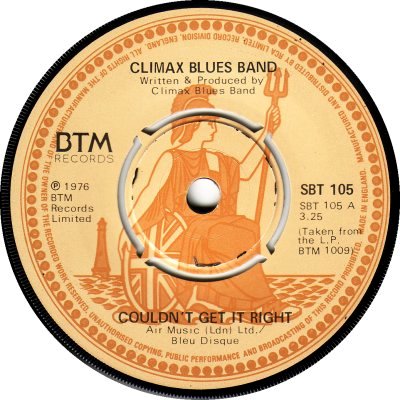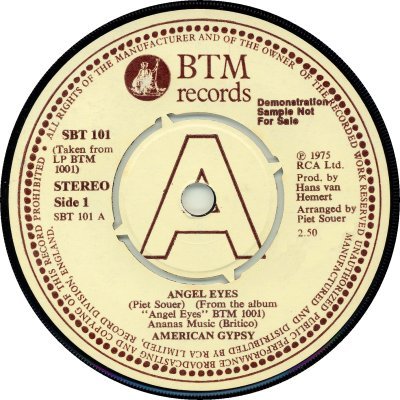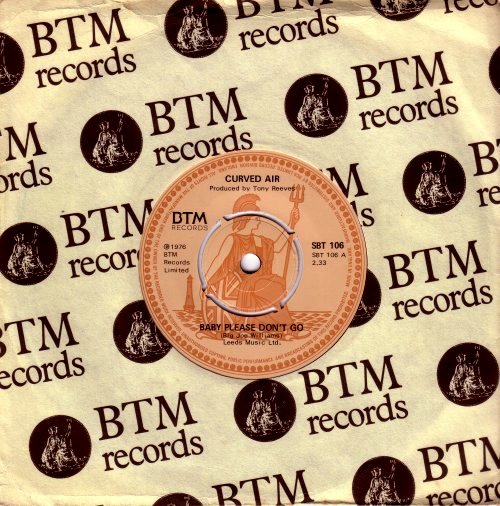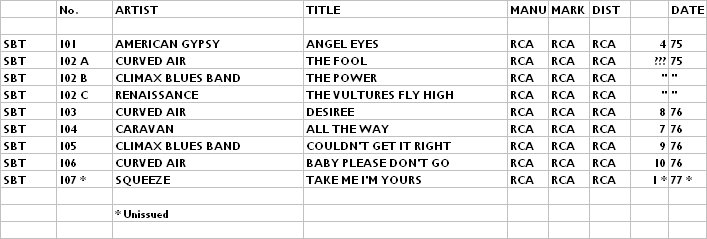




The record outlet of the British Talent Managers agency / management company. According to 'Music Week' of the 22nd of February 1975 the launch of the BTM label was the result of a deal between RCA managing director Geoff Hunnington and Miles Copeland and Nick Blackburn of BTM. The label featured several bands which were managed by the company; its output leaned towards the Progressive end of the Rock spectrum and included records by Renaissance, Caravan and Curved Air. Unsurprisingly it was an album-orientated label, but it cracked the Singles Charts in 1976 when the Climax Blues Band's 'Couldn't Get It Right' b/w 'Fat Maybelline' (SBT-105; 9/76) reached the No.10 spot. An ambitious European tour involving several BTM acts as well as Tina Turner, Lou Reed (occasionally) and the Mahavishnu Orchestra company, 'Startrucking '75', placed a considerable financial strain on the company, with the result that Copeland eventually had to dissolve British Talent Managers and make a fresh start. A single by 'New Wave' band Squeeze, 'Take Me I'm Yours' b/w 'No Disco Kid No' was intended for release but was cancelled, presumably as a result of BTM's money troubles. The band later enjoyed considerable Chart success on the books of A&M Records, and a version of 'Take Me I'm Yours' was their first hit for that label.
Inspired by the arrival of Punk Rock, Copeland headed in a new direction following the closure of BTM: he went on to play a leading role in several prominent Punk / New Wave companies, such as Step Forward, Illegal and Deptford Fun City, as well as in a booking agency called New Orders (for Punk bands) and an outlet for Punk records and merchandise, Faulty Products. In 1979 he set up I.R.S. - International Records Syndicate - in the USA, to represent a number of independent U.K. Punk / New Wave companies and to arrange for their records to be released in that country. I.R.S. evolved and became a successful record company in its own right.
To return to BTM: its singles were numbered in an SBT-100 series, and two label designs were used during its relatively short existence. The first design was relatively plain, with a small logo; it was cream-coloured with reddish-brown printing (1) for SBT-101 and black with white printing for SBT-102. For the remaining singles the logo increased in size to fill the label and the colouring became orangey-brown on an orangey-cream background (2). Pressing and distribution were by RCA, and demo copies were marked in the standard RCA fashion of the time (3, 4).



Copyright 2006 Robert Lyons.

